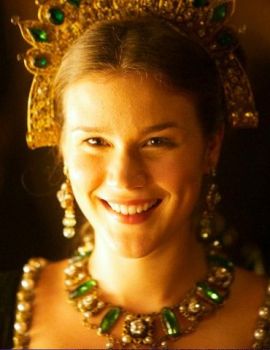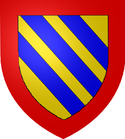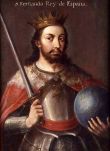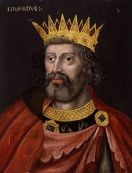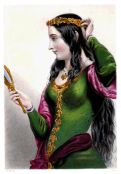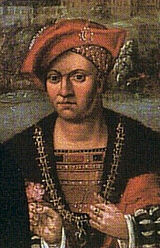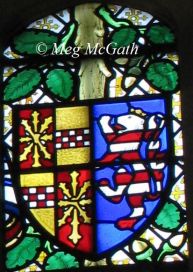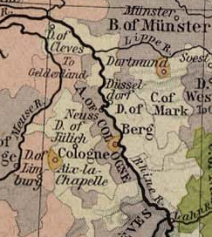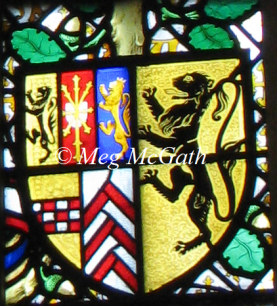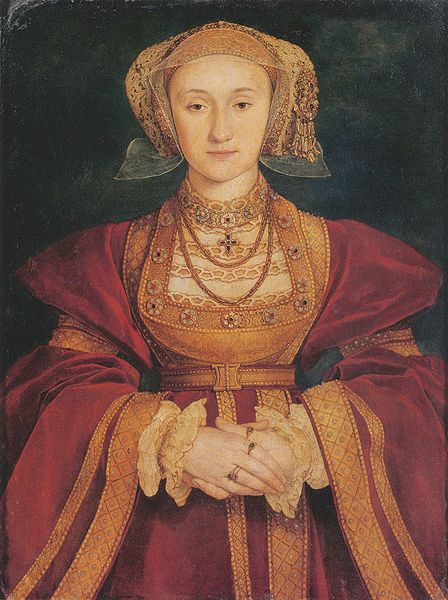Anne of Cleves
Ancestors
Click EasyEdit to add/edit this page (Don't see the EasyEdit button above? <a href="../#signin" target="_self">Sign in</a> or <a href="../accountnew" target="_self">Sign up</a>.) | | The Duchy of Cleves (German: Herzogtum Kleve; Dutch: Hertogdom Kleef) was a state of the Holy Roman Empire in present Germany (part of North Rhine-Westphalia) and the Netherlands (parts of Limburg, Noord-Brabant and Gelderland). Its territory was situated on both sides of the river Rhine, around its capital Cleves and roughly covering today's districts of Cleves, Wesel and the city of Duisburg. The County of Cleves (German: Grafschaft Kleve; Dutch: Graafschap Kleef) was first mentioned in the 11th century. In 1417, the county became a duchy. Its history is closely related to that of its neighbours: the Duchies of Jülich, Berg and Guelders and the County of Mark. In 1368, Cleves and Mark were united. In 1521 Jülich, Berg, Cleves and Mark formed the United Duchies of Jülich-Cleves-Berg. Anne of Cleves (1515–57), Queen Consort of England in 1540, was a daughter of Duke John III. When the last duke of Jülich-Cleves-Berg died issueless in 1609, a war broke out for the succession. The duchy was divided between Palatinate-Neuburg (Jülich and Berg) and Brandenburg (Cleves,Mark and Ravensberg) in the Treaty of Xanten (1614). However, large parts of the Duchy of Cleves were occupied by the United ProvincesKingdom of Prussia after 1701, Cleves was occupied by France in the Seven Years' War until 1672. Part of the (1757–62). In 1795 the Duchy of Cleves left of the Rhine and Wesel was occupied by France, and became part of the French département of the Roer. The rest of the duchy was occupied between 1803 and 1805, and became part of the département of Yssel-Supérieur and the puppet-state Grand Duchy of Berg (after 1811, the département of Lippe). In 1815, after the defeat of Napoleon, the duchy became part of the Prussian Province of Jülich-Cleves-Berg, which became part of the Prussian Rhine Province in 1822. The cities Gennep, Zevenaar, and Huissen became part of the United Kingdom of the Netherlands as a result of the 1815 Congress of Vienna. |
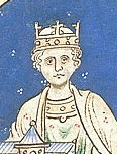
Henry II
King of England
(1133 - 1189)
great-grandson of William the Conqueror, was the first of the House of Plantagenet to rule England. Henry was the first to use the title "King of England" (as opposed to "King of the English").
| 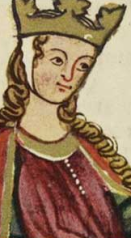
Eleanor of Aquitaine
Duchess of Aquitaine
(1122 - 1201)
Ruler in her own right of as Duchess, queen consort in France; then England; and finally queen mother in England. | 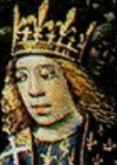
Louis VII
King of France
(1120 - 1180)
the son and successor of Louis VI and Adelaide of Maurienne. He ruled from 1137 until his death. He was a member of the House of Capet. Louis VII should be credited with preserving the Capetian dynasty during his feudal reign. | 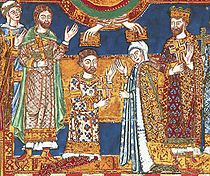 Henry II and Eleanor of Aquitaine had 8 children including: Henry II and Eleanor of Aquitaine had 8 children including:
King John of England, Queen Eleanor of Castile, and Matilda of Saxony (pictured right), Anne of Cleves had all 3 siblings as ancestors.
Eleanor and Louis had 2 children,
*Anne descends from Marie of France, Countess of Champagne
Louis VII married 3 times.
- Eleanor of Aquitaine
- Infanta Constance of Castile (daughter of Alphonse VII, King of Galicia, León and Castile, and Berenguela of Barcelona).
- Adèle of Champagne (daughter of Theobald II, Count of Champagne and Matilda of Carinthia).
*Anne of Cleves descends from all three of his marriages.
- By Matilda of Flanders Anne descends from King Stephen of England by his daughter Marie of England.
- Anne also descends from David I of Scotland by the Counts of Holland.
| 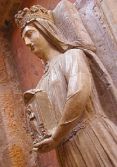
Berengaria
Queen of Castile and Leon
(1180 - 1246)
daughter of Eleanor of England, Queen of Castille
Mother of Ferdinand III | 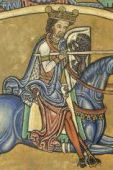
Alfonso IX
King of León and Galicia
(1171 – 1230)
Father of Ferdinand III
| 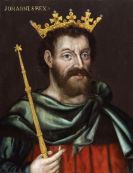
John I
King of England
(1167 - 1216)
Father of Henry III and Isabella of England, Holy Roman Empress (see Louis I of Hesse)
| 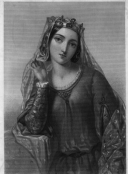
Isabella of Angoulême, Countess of Angouleme
(1188 - 1246)
Mother of Henry III and Isabella of England, Holy Roman Empress (see Louis I of Hesse)
|
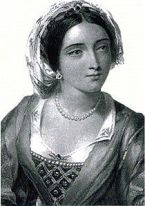
Eleanor of Castile
(1241-1290)
1st Wife of
Edward I
Daughter of Ferdinand III King of Castile, Galicia & León. Edward married Eleanor on October 18, 1254; at the Abbey of Las Huelgas, Burgos, Castile (Spain). She was dark haired and beautiful and they had 16 children, of which 7 survived into adulthood. Eleanor was buried in Westminster Abbey in London. To show his love for his departed wife, Edward erected 12 crosses along the route of her funeral procession from Lincoln to Westminster.
Mother of
Margaret of England<a class="external" href="http://www.youtube.com/watch?v=AgzSN-xZ5XI" rel="nofollow" target="_blank" title="D.Starkey on Matilda">
</a> | 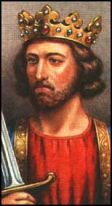
Edward I
King of England
(1239 - 1307)
Edward I was a tall man of six feet two inches (1.88m), with long arms and legs from which his nick-name, "Longshanks", was derived. His hair was black like his Provencal mother's, his complexion swarthy and his eyes fiery in anger. Edward spoke with a pronounced lisp, but possessed the Plantagenet temper in full measure.
Father of
Margaret of England
| 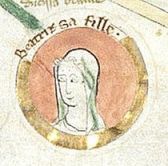
Beatrice of England
(Beatrice de Dreux)
(25 June 1242 – 24 March 1275)
Duchess of Brittany
Countess of Richmond
Younger sister of Edward I of England. She was the second eldest daughter of Henry III.
Beatrice's childhood was plagued by tragedy, and the stresses of her father's reign coupled with her mother's unpopularity with the English people. Despite the English, Henry III and Eleanor had a happy marriage and Beatrice grew up in a loving environment. She was originally proposed to be the wife of the King of France, but that along with a proposal from the King of Norway was turned down in favour of John of Dreux, heir to the Dukedom of Brittany.
Mother of
Blanche of Brittany | 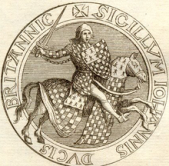
John II of Dreux
(John II de Montfort de Dreux, 2nd Earl of Richmond)
Duke of Brittany
2nd Earl of Richmond
(1239 – 18 November 1305)
Son of John I and Blanche of Navarre.
In 1268, Henry III granted the earldom of Richmond [English Peerage] specifically to John I, Duke of Brittany (1217–1286), and upon his death John II became the 2nd Earl.
He was killed during the celebrations surrounding the coronation of Pope Clement V in 1305. John was leading the pope's horse through the crowd. So many spectators had piled atop the walls that one of them crumbled and collapsed right on top of the unfortunate duke.
Father of
Blanche of Brittany |
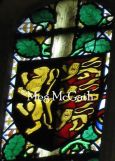
Margaret of England
Duchess of Brabant, Lothiar, and Limburg
(15 March 1275 – after 1333)
Margaret was the tenth child and seventh daughter of King Edward I of England and Eleanor of Castile.
Margaret's siblings included: Henry of England; Joan of Acre; Eleanor, Countess of Bar; Elizabeth of Rhuddlan, and her father's suceesor, Edward II of England. Her half-siblings through her father's second marriage to Margaret of France include: Thomas of Brotherton, 1st Earl of Norfolk; Edmund of Woodstock; 1st Earl of Kent and Eleanor of England.
Mother of
John III of Brabant | 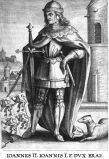
John II of Brabant
(Jean II de Brabant, Duc de Brabant)
Duke of Brabant, Lothiar, and Limburg
(27 September 1275 – 27 October 1312)
Son of John I, Duke of Brabant and Margaretha of Flanders, daughter of Guy of Dampierre.
During the reign of John II, Brabant continued supporting a coalition to stop French expansion. He tried to conquer South Holland (district of medieval Holland) from the pro-french count John II of Holland, but was not successful. John, who suffered from kidney stones and wanted his duchy to be peacefully handed over to his son upon his death, in 1312 signed the famous Charter of Kortenberg.
Father of
John III of Brabant
| 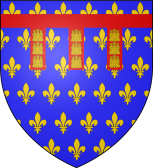
Philip of Artois
(Philippe D'Artois)
Lord of Conches, Nonancourt, and Domfront
(1269 – 11 September 1298)
Son of Robert II of Artois and Amice de Courtenay.
He served under his father at the Battle of Furnes, where he was wounded. He never recovered, and died of the effects over a year later. His premature death led to a legal battle later, when Artois was left to his sister Mahaut, rather than his son Robert. Robert was never the proper Count of Artois, and on Mahaut's death Artois passed to her daughter, Joan II, suo jure Countess of Burgundy, who married Philip V of France; they were grandparents to Louis II of Flanders,
see below.
Father of Margaret of Artois
| 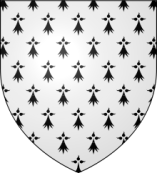
Blanche of Brittany Dreux
(1271–1327)
Blanche's daughter Margaret was the mother of Philip III of Navarre who was married to Joan II of Navarre. Her sister, Marie was married to Guy IV, Count of Saint-Pol.
By Blanche and Philip's son, Robert [who did not succeed his father as Count of Artois], they were ancestors to Elizabeth of Never of the House of Valois-Burgundy who married John I, Duke of Cleves.
Mother of Margaret of Artois |
|
| || |
|
|
| 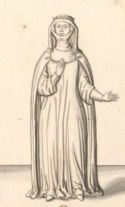
Margaret of Artois
(Marguerite d'Artois)
Countess consort of Évreux
(1285 - 1311)
Margaret had five children who survived into adulthood; all who made advantageous marriages.
Mother of Marie D'evreux | 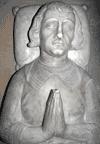
Louis of France
Count of Évreux
(3 May 1276 - 19 May 1319)
Son of Philip III of France and his second wife, Maria of Brabant. He died in France from poisoning. Louis was a maternal great-uncle of Marguerite of France, Countess of Flanders and mother to Louis II of Flanders,
see below.
Anne of Cleves also descended from Louis's half-brother Philip IV of France.
Father of Marie D'evreux |
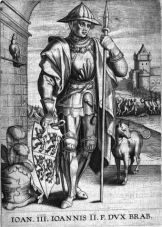
John III of Brabant
(Jean III de Brabant, Duc de Brabant)
Duke of Brabant, Lothiar, and Limburg
(1300 - 5 December 1355)
His daughter Margaret, by Margaret of France was great grandmother of John of Bohemia and therefore great great grandmother of Charles IV, Holy Roman Emperor.
Father of Margaret of Brabant | 
Margaret of France
(Marie d'Évreux)
Duchess of Brabant, Lothiar, and Limburg
(1303 - 31 October 1335)
Marie's daughter by John, Joanna, was the first women to be Duchess of Brabant in her own right. Upon Joanna's death, her title passed to her great-nephew, Antoine.
Mother of Margaret of Brabant |
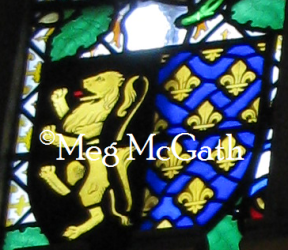 Marie was the eldest of five children born to her parents. Marie's younger siblings included: Charles d'Évreux, Lord of Etamples; Philip III of Navarre, husband of Joan II of Navarre; and Jeanne d'Évreux; Queen consort of France by her marriage to Charles IV of France. Marie was a descendant of Henry III of England and Eleanor of Provence by their daughter, Beatrice of England, Duchess of Brittany. Marie was the eldest of five children born to her parents. Marie's younger siblings included: Charles d'Évreux, Lord of Etamples; Philip III of Navarre, husband of Joan II of Navarre; and Jeanne d'Évreux; Queen consort of France by her marriage to Charles IV of France. Marie was a descendant of Henry III of England and Eleanor of Provence by their daughter, Beatrice of England, Duchess of Brittany.
John III of Brabant waffled through his life making alliances with countries to consolidate his assets and make sure they stayed within his lineage and Duchy. His first alliance was with France (1332-1337) to keep neighboring countries from invading. John made an alliance which betrothed his eldest son to Philip VI's daughter Marie who died shortly after they wed. Another alliance forced John to give over various villages to the Count of Guelder, whose son was engaged to John's daughter Marie. But in 1337, when Edward III decided to press his claim to the crown of France, John was more than willing to support his first cousin in the beginning of the Hundred Years' War. This alliance helped Brabant flourish and grow economically and in power. John received his subsidy and agreed to betroth his daughter Margaret to Edward, the Black Prince, heir to the English throne. Two campaigns left Edward III broke and he was forced to return to England without the crown of France. Negotiations fell through as King Edward's attentions fell elsewhere. In 1345, Brabant met with a representative of France and agreed to sign a treaty. Meanwhile, Margaret was now suggested as a wife for Louis of Male, who had inherited the title of Count of Flanders. Flanders and Brabant had been disputing over the title of Lord of Mechelen and with Margaret's betrothal to Louis, the title was settled upon Brabant. Despite his cousin Edward's efforts of diplomacy, John remained an ally of France until his death in 1355. |
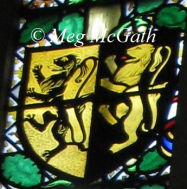 Margaret of Brabant Margaret of Brabant
(Marguerite de Brabant)
Countess of Flanders
(c. 1323 - 1368)
She was the second daughter of John and Margaret, but the only child to have issue.
Mother of Margaret of Flanders
| 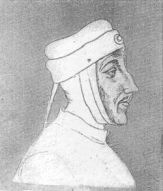 Louis II of Flanders Louis II of Flanders
(Louis II de Mâle, Comte de Flandre)
Louis III, Count of Artois
Louis I, Count of Palatine Burgundy
Louis, Count of Male
(25 October 1330 – 30 January 1384)
He was the son of Louis I of Flanders and Marguerite of France, daughter of Philip V of France. Marguerite was Countess of Artois and Burgundy in her own right.
Father of Margaret of Flanders
|
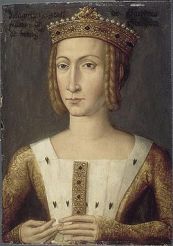 Margaret of Flanders Margaret of Flanders
(Marguerite de Flandre, Comtesse de Flandre)
Countess of Flanders (as Margaret III),
Countess of Artois; Rethal; Nevers; Avergne; Boulogne
Countess Palatine of Burgundy (as Margaret II)
Duchess consort of Burgundy, twice.
(13 April 1350 – 16/21 March 1405)
Margaret was also known as Margaret of Dampierre. Margaret was the only daughter of Margaret of Brabant and Louis II, thus she inherited all her father's titles and through her mother, Margaret of Brabant, she was also an heiress of the Duchies of Brabant and Limburg. Margaret was widowed in 1361, and with the death of her husband the duchy of Burgundy was inherited by John II of France (as John I of Burgundy). In 1369, Margaret remarried to the son of John II of France, Philip 'the bold' who was granted the Duchy of Burgundy thus making Margaret consort again.
They were ancestors to Philip of Burgundy, husband and consort to Juana I of Castile, sister of Queen Katherine of Aragon.
Mother of John of Burgundy | 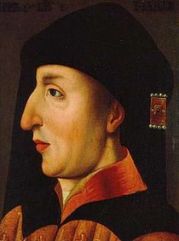 Philip II of Burgundy Philip II of Burgundy
(Philippe II de Valois, Duc de Bourgogne)
Duke of Burgundy (Bourgogne); Touraine
Count of Charolais
Count (with Margaret) of Palatine Burgundy; Avergne and Boulogne; Artois; Flanders
Nevers; Renthal
(15 January 1342 - 27 April 1404)
Philip was the fourth and youngest son of King John II of France and his wife, Bonne of Luxembourg. He was the founder of the Burgundian branch of the House of Valois. In arranging the marriages of his children, Philip followed an intelligent diplomatic and strategic design, which would be followed by his successors in Burgundy as far as Emperor Maximilian I.
They were ancestors to Philip of Burgundy, husband and consort to Juana I of Castile, sister of Queen Katherine of Aragon.
Father of John of Burgundy |
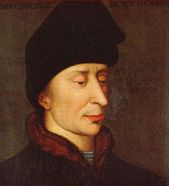 John 'the fearless' of Burgundy John 'the fearless' of Burgundy
(Jean, Duc de Bourgogne)
Duke of Burgundy
Count of Charolais; Artois; Flander; Palatine of Burgundy; Nevers
(28 May 1371 – 10 September 1419)
Also known as John of Valois.
They were ancestors to Philip of Burgundy, consort of Juana I of Castile, Queen Katherine of Aragon's elder sister.
Father of Marie of Burgundy | 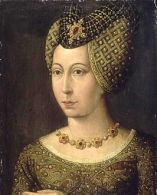 Margaret of Bavaria Margaret of Bavaria
(Marguerite von Bayern Wittlesbach)
Duchess consort of Burgundy
Countess consort of Artois and Flanders; Palatine of Burgundy; Nevers
(1363 - 23 January 1423)
*Anne descends from Matilda of England, daughter of Henry II and Eleanor of Aquitaine, and Henry 'the lion' through Margaret's Bavarian ancestors.
Mother of Marie of Burgundy |
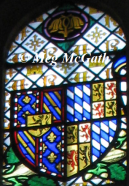 When King Henry V of England invaded French territory and threatened to attack Paris, John participated in the peace negotiations, but with dubious intent. Although he talked of helping his sovereign, his troops took no part in the Battle of Agincourt (in 1415), where two of his brothers, Antoine, Duke of Brabant, and Philip II, Count of Nevers, died fighting for France. Two years later, John's troops took the city of Paris. The future Charles VII of France had escaped just before and thus John made himself protector of the King. With the English and the Burgundian troops surrounding France, the Dauphin (future Charles VII) tried to negotiate with John -- there were several negotiations. When King Henry V of England invaded French territory and threatened to attack Paris, John participated in the peace negotiations, but with dubious intent. Although he talked of helping his sovereign, his troops took no part in the Battle of Agincourt (in 1415), where two of his brothers, Antoine, Duke of Brabant, and Philip II, Count of Nevers, died fighting for France. Two years later, John's troops took the city of Paris. The future Charles VII of France had escaped just before and thus John made himself protector of the King. With the English and the Burgundian troops surrounding France, the Dauphin (future Charles VII) tried to negotiate with John -- there were several negotiations. 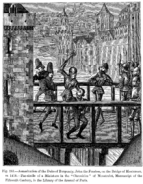 They met in July and swore peace on the bridge of Pouilly, near Melun. On the grounds that peace was not sufficiently assured by the Pouilly meeting, a fresh interview was proposed by the Dauphin to take place on 10 September 1419 on the bridge at Montereau. John of Burgundy was present with his escort for what he considered a diplomatic meeting. However, John was assassinated by the Dauphin's companions. His son, Philip 'the good' would go on to form an alliance with the English. They met in July and swore peace on the bridge of Pouilly, near Melun. On the grounds that peace was not sufficiently assured by the Pouilly meeting, a fresh interview was proposed by the Dauphin to take place on 10 September 1419 on the bridge at Montereau. John of Burgundy was present with his escort for what he considered a diplomatic meeting. However, John was assassinated by the Dauphin's companions. His son, Philip 'the good' would go on to form an alliance with the English. |
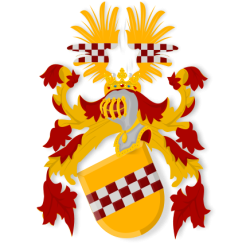
Adolf III of Mark
(Adolf III von der Mark)
Count of Mark
(c. 1334 – 7 September 1394)
second son of Count Adolph II of the Marck and Margaret of Cleves. When Margaret's father and uncle died without male issue, the County of Cleves went to Adolf and was thus passed down to the Counts of Mark and his male issue.
In 1368, he succeeded his uncle John of Cleves and could maintain his rule there through the support of Liège.
After his brother Engelbert III of the Marck died without heirs in 1391, Adolph inherited the Marck too. However, he gave Marck to his son Dietrich in 1393. Adolph died in 1394 and was succeeded in Cleves by another of his sons, Adolph. Cleves and Marck were reunited again 4 years later, when Dietrich died and was succeeded by Adolph IV.
Father of Adolph I, 1st Duke of Cleves
| 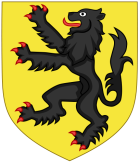
Margaret of Jülich
(c. 1350 – 10 October 1425)
was a daughter of Duke Gerhard VI of Jülich and his wife, Margaret of Ravensberg (1315-1389). Margaret's paternal grandmother was Joanna of Hainault, daughter of William I, Count of Hainault and Joan of Valois, granddaughter of King Philip III of France. Her aunt, Isabella, married their cousin, John, 3rd Earl of Kent, the grandson of Edward I of England and his second wife, Marguerite of France.
Joanna of Hainault was sister to Philippa, queen consort of Edward III of England.
Joanna of Hainault's mother, Joan of Valois, was the sister of King Philip VI of France and paternal sister of Catherine, Titular Empress of Constantinople whose daughter Margaret married Francesco del Balzo, 1st Duke of Andria (grandfather by Sueva Orsini to Jacquetta of Luxembourg, mother of Elizabeth Woodville, queen consort of Edward IV). Joan was also the niece of Marguerite, the second queen consort of Edward I and cousin of Isabella, queen consort of King Edward II of England.
Mother of Adolph I, 1st Duke of Cleves
|
| Anne's great great grandparents |
Adolph I of Cleves
(Adolf I)
1st Duke of Cleves Count of Cleves Count of Mark
(2 August 1373 – 23 September 1448)
Father of John I of Cleves
| Marie of Burgundy
(Marie de Bourgogne) Duchess of Cleves
Countess of Mark
(1393 – 30 October 1463)
Mother of John I of Cleves
| Louis I of Hesse
(Ludwig I Landgraf von Hessen-Marburg)
Landgrave of Hesse
(6 February 1402-17 January 1458)
Father of Henry III of Hesse
| Anna of Saxony
(Anne von Sachsen)
Landgravine of Hesse
(5 June 1420 - 17 September 1452)
Mother of Henry III of Hesse | William of Jülich
(Wilhelm von Jülich)
(c. 1382 - c. 1428)
Father of Gerhard VII | Adelheid of Teck
(Adelheid von Tecklenburg)
(c. 1400 - ?)
Mother of Gerhard VII | Frederick I of Bradenburg
(Friedrich I Kurfürst von Brandenburg)
Margrave of Brandenburg-Ansbach; Bradenburg-Kulmbach
Elector of Brandenburg
Burgrave of Nuremberg
(21 September 1371 - 20 September 1440)
Father of Albert III
| Elisabeth of Bavaria
(Elisabeth Prinzessin von Bayern-Landshut)
Princess of Bavaria-Landshut
Margravine of Brandenburg-Ansbach; Kulmbach
Electress of Brandenburg
Burgravine of Nuremberg
(c. 1383 - 13 November 1442)
Mother of Albert III
|
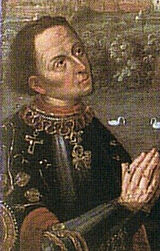 Adolph I of Cleves was the 2nd Count of Cleves and 4th Count of Mark. In 1417 he was made Duke of Cleves. Adolf was the son of Adolph III of Mark and Margaret von Jülich, daughter of Gerhard VI Count von Jülich and Margaret von Ravensberg. Adolph's father was the Bishop of Münster, Archbishop of Cologne, Count of Mark and Count of Cleves (as Adolph I) from 1368 until 1394. In 1362, he signed a contract with his uncle Bishop Engelbert III of the Marck of Liège whereby he would inherit Cleves in the likely event that his uncle, Count John of Cleves, died childless. In 1368, he succeeded his uncle John of Cleves and could maintain his rule there through the support of Liège. Adolph I of Cleves was the 2nd Count of Cleves and 4th Count of Mark. In 1417 he was made Duke of Cleves. Adolf was the son of Adolph III of Mark and Margaret von Jülich, daughter of Gerhard VI Count von Jülich and Margaret von Ravensberg. Adolph's father was the Bishop of Münster, Archbishop of Cologne, Count of Mark and Count of Cleves (as Adolph I) from 1368 until 1394. In 1362, he signed a contract with his uncle Bishop Engelbert III of the Marck of Liège whereby he would inherit Cleves in the likely event that his uncle, Count John of Cleves, died childless. In 1368, he succeeded his uncle John of Cleves and could maintain his rule there through the support of Liège.
Adolph was formally married to Agnes of Germany (descendant of Isabella of England, Holy Roman Empress), daughter of Rupert and Elisabeth of Nuremburg c.1400. Sadly, Agnes died shortly after and left Adolph with no children.
In 1415, the Duke married Marie of Burgundy. The two would go on to have eight children. Some of the notable children include Catherine of Cleves who married Arnold, the Duke of Guelders; their daughter was Mary of Guelders, Queen consort of Scots as wife of James II of Scotland. 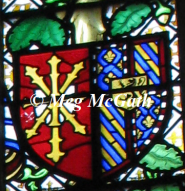 Their grandson James IV of Scotland married King Henry VIII's sister, Margaret Tudor (Henry's eldest sister). Margaret's son, James V and his consort Mary of Guise (mentioned in Season 3 as being a prospective wife for King Henry after the death of Queen Jane Seymour) were the parents to Queen Mary of Scots (the baby girl born to the Scottish king in Season 4). Mary of Scots was the mother of the successor to Elizabeth I, King James I. Mary of Scots was also for a time the prospective bride of Prince Edward Tudor. The Duke's youngest child, Maria of Cleves, would go on to become the 3rd wife of Charles of Valois, Duke of Orleans and father Louis XII of France; the first husband to Princess Mary Tudor, Duchess of Suffolk. Their grandson James IV of Scotland married King Henry VIII's sister, Margaret Tudor (Henry's eldest sister). Margaret's son, James V and his consort Mary of Guise (mentioned in Season 3 as being a prospective wife for King Henry after the death of Queen Jane Seymour) were the parents to Queen Mary of Scots (the baby girl born to the Scottish king in Season 4). Mary of Scots was the mother of the successor to Elizabeth I, King James I. Mary of Scots was also for a time the prospective bride of Prince Edward Tudor. The Duke's youngest child, Maria of Cleves, would go on to become the 3rd wife of Charles of Valois, Duke of Orleans and father Louis XII of France; the first husband to Princess Mary Tudor, Duchess of Suffolk.
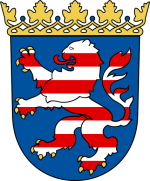 Louis I of Hesse (German: Ludwig) (6 February 1402, Spangenberg - 17 January 1458), called "the Peaceful" was Landgrave of Lower Hesse (Hesse) from 1413-1458. He was the son of Hermann II, Landgrave of Hesse and Margaret, the daughter of Frederick V of Nuremberg. He married Anna of Saxony daughter of Frederick I, Elector of Saxony on 13 September 1436. Through his maternal grandmother, Elizabeth of Meissen, he was a great-great-grandson of Louis IV, Holy Roman Emperor, a descendant of Matilda of England, Duchess of Saxony (daughter of Henry II of England) and by his other maternal great-great-grandfather, Frederick I, Margrave of Meissen, he was a descendant of Isabella of England, Holy Roman Empress (daughter of King John of England). Louis I of Hesse (German: Ludwig) (6 February 1402, Spangenberg - 17 January 1458), called "the Peaceful" was Landgrave of Lower Hesse (Hesse) from 1413-1458. He was the son of Hermann II, Landgrave of Hesse and Margaret, the daughter of Frederick V of Nuremberg. He married Anna of Saxony daughter of Frederick I, Elector of Saxony on 13 September 1436. Through his maternal grandmother, Elizabeth of Meissen, he was a great-great-grandson of Louis IV, Holy Roman Emperor, a descendant of Matilda of England, Duchess of Saxony (daughter of Henry II of England) and by his other maternal great-great-grandfather, Frederick I, Margrave of Meissen, he was a descendant of Isabella of England, Holy Roman Empress (daughter of King John of England). |
| Anne's great grandparents |
John I
Duke of Cleves, Count of Mark
(16 February 1419 – 5 September 1481)
Father of John II of Cleves
| Elizabeth of Nevers
Princess of Burgundy
(Elizabeth de Never Bourgogne)
(1439 - 21 June 1483)
Daughter of John II, Count of Nevers and Jacqueline d'Ailly.
Mother of John II of Cleves
| Henry III 'the rich' of Hesse
Landgrave of Upper Hesse
(Heinrich III Landgraf von Hessen-Marburg)
(15 October 1440 - 13 January 1483)
Father of Mathilde of Hesse | Anna of Katzeneln-
bogen
(Anna von Katzeneln-bogen)
Landgravine of Upper Hesse
(5 September 1443 - 18 February 1494)
Daughter of Philip, Count of Katzeneln-
bogen and Anne of Wurttem-
burg
Mother of Mathilde of Hesse
| Gerhard VII Count of Jülich-Berg
(Gerhard VII Herzog von Jülich)
(? - 19 August 1475)
Father of William IV
| Sophie of Sachsen-Lauenburg
(Sophie von Sachsen-Lauenburg)
Countess of Jülich-Berg
(? - 9 September 1473)
Daughter of Bernard, Count of Sachsen-Lauenburg
and Adelheid of Pomerania
Mother of William IV
| Albert III of Brandenburg
Prince-elector of the Margraviate of Brandenburg; Margrave of Brandenburg-Kulmbach
Elector of Brandenburg
(Albrecht III Achilles Kurfürst von Brandenburg)
(9 November 1414 – 11 March 1486)
Father of Sybil of Brandenburg
| Anne of Saxony
(Anne Prinzessin von Sachsen)
Princess of Saxony
Margravine of Bradenburg-Kulmach
Electress of Brandenburg
(7 March 1436 - 31 October 1512)
Daughter of Prince-Elector Frederick II of Brandenburg and Margaret of Austria Habsburg
Mother of Sybil of Brandenburg
|
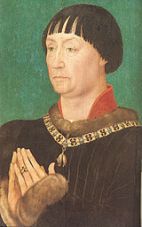 John I ruled Cleves from 1448 from 1481. He also ruled over Mark from 1448–1481. John I ruled Cleves from 1448 from 1481. He also ruled over Mark from 1448–1481.
The County of Mark (German: Grafschaft Mark, colloquially known as Die Mark) was a county and state of the Holy Roman Empire in the Lower Rhenish-Westphalian Circle. It lay on both sides of the Ruhr River along the Volme and Lenne Rivers. 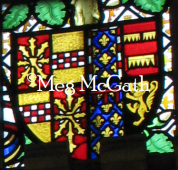 The Counts of the Mark were among the most powerful and influential Westphalian lords in the Holy Roman Empire. The name ("Higher Mark"), while the former "Lower Mark" (between the Ruhr and Lippe Rivers) is — for the most part — merged in the present Mark is recalled in the present-day Märkischer Kreis district in lands south of the Ruhr River in North Rhine-Westphalia, Germany. The northern portion (north of the Lippe River) is still called Hohe MarkRuhr area. Coupled with the Duchy of Cleves, one might see why Cromwell thought the match between Anne of Cleves and Henry would be a wise choice. Albert III of Brandenburg and Anna of Saxony The Counts of the Mark were among the most powerful and influential Westphalian lords in the Holy Roman Empire. The name ("Higher Mark"), while the former "Lower Mark" (between the Ruhr and Lippe Rivers) is — for the most part — merged in the present Mark is recalled in the present-day Märkischer Kreis district in lands south of the Ruhr River in North Rhine-Westphalia, Germany. The northern portion (north of the Lippe River) is still called Hohe MarkRuhr area. Coupled with the Duchy of Cleves, one might see why Cromwell thought the match between Anne of Cleves and Henry would be a wise choice. Albert III of Brandenburg and Anna of Saxony
After passing some tim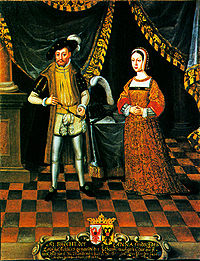 e at the court of Emperor Sigismund, Albert took part in the war against the Hussites, and afterwards distinguished himself whilst assisting the German king, Albert II, against Poland. On the division of territory which followed his father's death in 1440, Albert received the Principality of Ansbach. Although his resources were meager, he soon took a leading place among the German princes, and was especially prominent in resisting the attempts of the towns to obtain self-government. Albert supported Emperor Frederick III in his struggle with the princes who desired reforms in the Holy Roman Empire, and in return for this loyalty received many marks of favour from Frederick, including extensive judicial rights which aroused considerable irritation among neighbouring rulers. After treating in vain for a marriage between one of his sons, Albert handed over the government of Brandenburg to his eldest son John, and returned to his Franconian possessions. Albert's main attention afterwards was claimed by the business of the empire. e at the court of Emperor Sigismund, Albert took part in the war against the Hussites, and afterwards distinguished himself whilst assisting the German king, Albert II, against Poland. On the division of territory which followed his father's death in 1440, Albert received the Principality of Ansbach. Although his resources were meager, he soon took a leading place among the German princes, and was especially prominent in resisting the attempts of the towns to obtain self-government. Albert supported Emperor Frederick III in his struggle with the princes who desired reforms in the Holy Roman Empire, and in return for this loyalty received many marks of favour from Frederick, including extensive judicial rights which aroused considerable irritation among neighbouring rulers. After treating in vain for a marriage between one of his sons, Albert handed over the government of Brandenburg to his eldest son John, and returned to his Franconian possessions. Albert's main attention afterwards was claimed by the business of the empire.
Soon after taking part in the election of Maximilian as King of the Romans, Albert died at Frankfurt in March 1486. He left a considerable amount of treasure. Albert was married twice. First to Margaret of Baden by whom he had six children. Through his second marriage with Anna, Princess of Saxony he had thirteen children. |
John II, "The Pious" or "The Babymaker"
Duke of Cleves
Count of Mark
(Jean II Herzog von Kleve)
(1458–1521) | Mathilde of Hesse
(Matilde von Hessen-Marburg)
Duchess of Cleves
(4 November 1473 - 19 November 1524) | William IV of Jülich
(Wilhelm IV Herzog von Jülich)
Duke of Jülich
Duke of Berg
(9 January 1455 - 6 September 1511) | Sybil of Brandenburg
(Sybil von Brandenburg)
(31 May 1467 - 9 July 1524) |
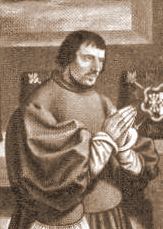
Johann III von Kleve-Jülich-Berg
(John III, Duke of Cleves)
Duke of Cleves,
Count of Jülich-Berg,
Count of Mark
Lord of Ravensberg
(10 November 1490 – 6 February 1538/9)
John III the Peaceful John III became Regent of the United Duchies of Jülich-Cleves-Berg in 1521, and Lord of Ravensberg in 1528. He was a great-great-grandson of John the Fearless, Duke of Burgundy. His wife was Maria, Duchess of Jülich-Berg. John represented a compensatory attitude, which strove for a via media, a middle way, between the two confessions during the Protestant Reformation.Despite what others may have thought, not all Germanic princely homes were Lutheran Protestant. In fact the real influence at the court of Cleves was Erasmus. Many of men were friends and followers of this well-educated Dutch scholar and theologian. When Duke John decided to write up a list of church regulations, Erasmus was the first person the Duke went to Erasmus personally for consultation and approval.Duke John had an instinct for balance as was shown when he married his eldest daughter Sybilla to Johann Frederick of Saxony. Johann would go on to later head the Schmalkaldic League.In many ways the court at which Anne was raised was ideal for raising a Queen for the 1540s. It was fundamentally liberal, but serious-minded, theologically inclined, profoundly Erasmian; as was the court of Queen Katherine of Aragon had once been.
Anne and her brother, the Duke of Cleves, were in-laws to the Elector of Saxony. The Duke of Cleves was one of the guiding spirits of the Schmalkaldic League, and he had given mortal offence to the Emperor by his acceptance of the Duchy of Guelders. When Holbein went, Cleves was seen as an important potential ally in the event France and the Holy Roman Empire (who had someone made a truce in their long history of conflict) decided to move against the countries who had thrown off the Papal authority. England then sought alliances with countries who had been supporting the reformation of the church. Several of the Duchys and principalities along the Rhine were Lutheran. Holbein painted the sisters of the Duke of Cleves and <a class="external" href="http://www.tudorplace.com.ar/aboutHenryVIII.htm" rel="nofollow" target="_blank">Henry</a> decided to have a contract drawn up for his marriage to Anne. Anne's brother, John who became Duke in 1538, was extremely touchy when it came to the possible marriage of his sister Anne to Henry. Like most men in power back then the Duke was more interested in securing alliances and obtaining riches. On one side was Charles V of the Holy Roman Empire and on the other was England's King Henry.
| 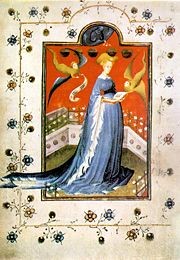
Marie von Jülich-Berg
(3 August 1491 – 29 August 1543)
Marie came from the line of German princesses that stretched back to Sybilla of Brandenberg, Sophia of Saxony, and Adelaide of Teck. Such lineage, if not particularly impressive to the English, did at least recall one popular queen -- Philippa of Hainault, consort of Edward III, who had pleaded mercy for the burghers at Calais in 1347.
Marie or Maria was no Isabella of Castile; nor were the exciting ideas of the Renaissance in educating women, or at least princesses. Duchess Marie was a strict Catholic. She was not subject to the liberal reforming that of which her father and husband were connected with. Marie was strict and believed in a strict upbringing for her daughters. Perhaps one of the many reasons Henry VIII disliked Anne so much was the fact that Anne was not brought up as an educated noblewoman of the time in England. Anne did not possess the accomplishments that Henry VIII so longed for in a consort; music, literature, games, etc. Anne of Cleves was ill-equipped for the contentious, sophisticated world that lay outside her mother's lair.
Duchess Marie was unwilling when it came to the possibility of sending her daughter to England. It is quoted that in a later correspondence she loved her daughter so much that she 'loathe to suffer her to depart her'.
Anne of Cleves spent most of her time with her mother and brother after her father died. She longed to get away from court and perhaps that one of the reasons she never returned to Cleves after Henry divorced her.
John and Marie had four children. Sybille, Wilhelm, Amalia, and Anne(4th wife to Henry VIII). Sybille would go on to marry John Frederick I, Elector of Saxony and have issue. Sybille in an ancestress of Queen Caroline of Brandenburg-Ansbach, Queen consort to George II of Great Britain. The current royal house of Great Britain, the House of Windsor, are descendants of Sybille and Frederick I of Saxony making the current Queen Elizabeth II of Great Britain a descendant. |
|
|
|
